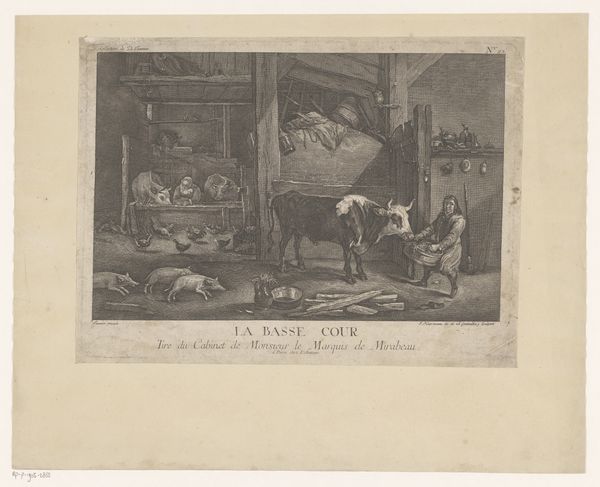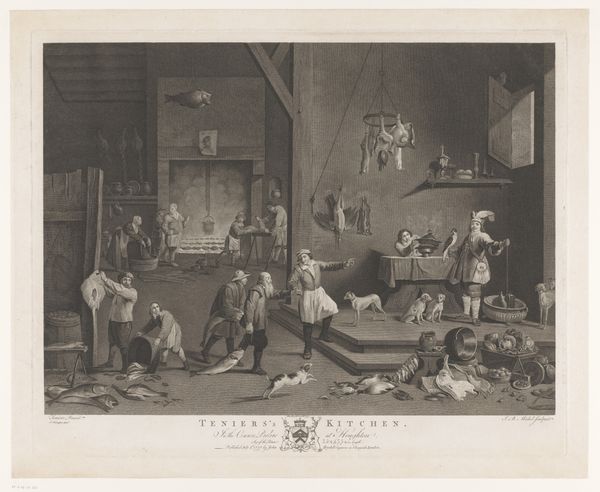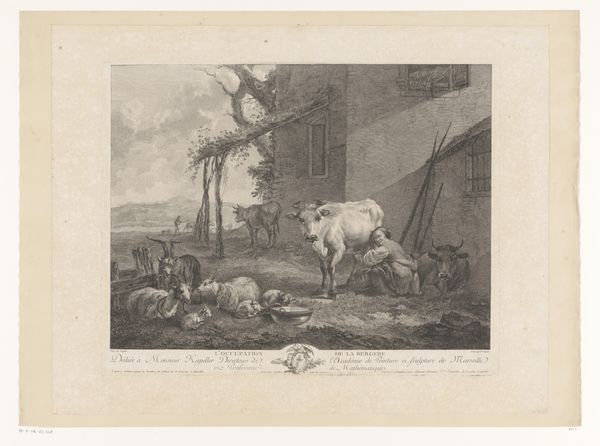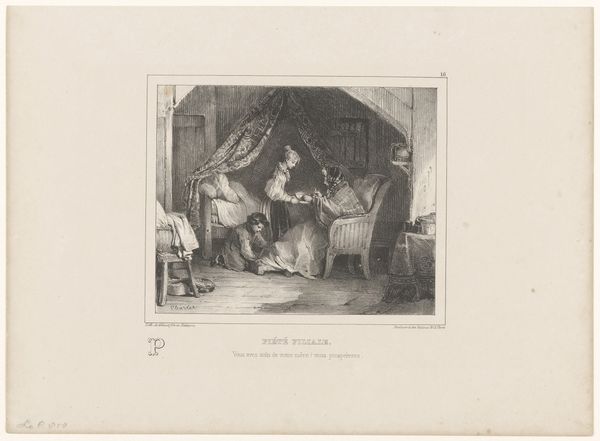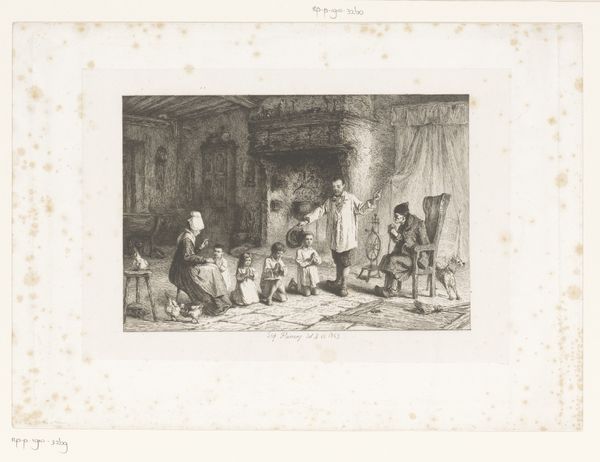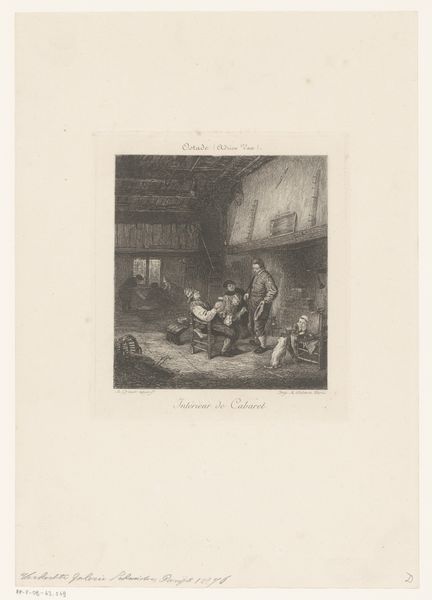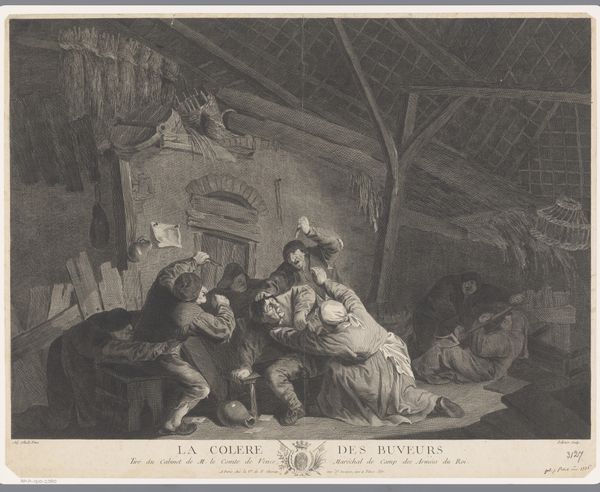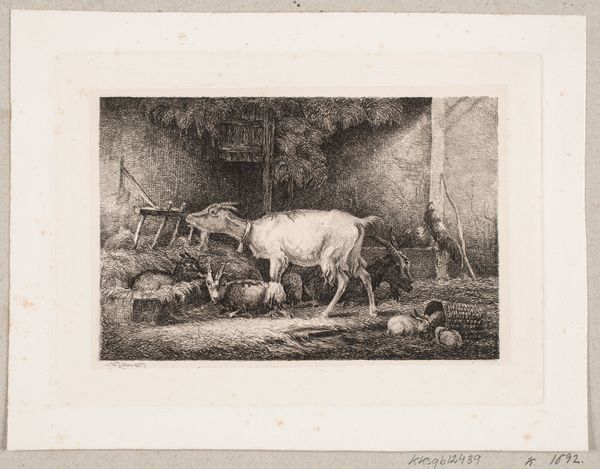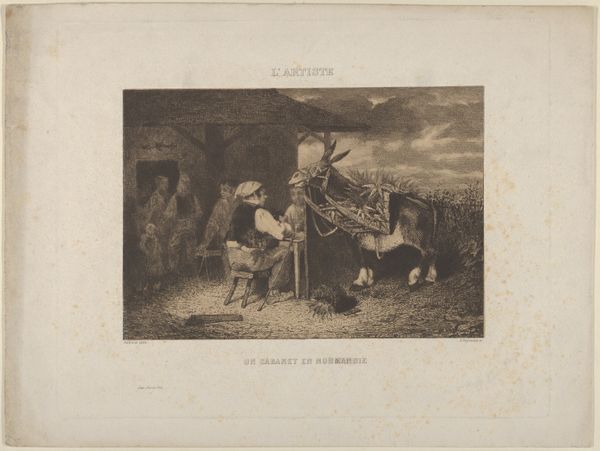
print, etching
#
baroque
# print
#
etching
#
old engraving style
#
landscape
#
figuration
#
genre-painting
Dimensions: height 365 mm, width 455 mm
Copyright: Rijks Museum: Open Domain
Curator: Jacques Philippe Le Bas created this etching, "Two Farmers Feeding Cattle in a Barn" in 1743. The original is held here at the Rijksmuseum. What’s your first take on it? Editor: It feels like a tableau vivant, frozen in a moment of everyday life. The textures, the subdued grays, give it an earthy and somewhat somber quality. Curator: Le Bas was known for his skill as a reproductive engraver. His process involved meticulous observation and translation, effectively democratizing access to images of genre scenes. Editor: Thinking about that replication and its reach is fascinating. The piece almost romanticizes rural life, though I wonder how accurately it reflects the lived realities of labor for those in such roles at the time. It presents a sanitized version, doesn't it? Curator: Possibly, yes. It reflects a kind of idyllic fantasy rather than a harsh reality, intended for consumption by a privileged class that never experienced farm work firsthand. And you have to acknowledge the labour that went into it - each line painstakingly etched to create tonal variation, mirroring a painted original to broaden the work's reach through print circulation. Editor: Exactly! Who was this imagery actually intended to serve, and at whose expense? This era was hardly egalitarian; wealth and power were intensely concentrated. Representing "ordinary life" inevitably had implications for class structures and their perception. This is definitely not for those who wake up to feed cows. Curator: These etchings also played a crucial role in spreading artistic ideas. Through their replication and distribution, etchings like this impacted workshops and smaller ateliers that didn't have first-hand contact with fine oil paintings. These visual shorthands, mediated through this print-making, had impacts. Editor: Agreed! And even now, our own viewing is influenced by historical narratives, class perceptions, and assumptions inherent to the era of production. Thinking critically about those layers helps us engage more meaningfully. Curator: The etching process itself gives us insights into how art and even visual culture circulated more broadly during this era. That understanding transforms our entire perception of this work! Editor: Yes, interrogating this intersection is so valuable. We understand both the piece and our relationship with it more holistically. Thanks! Curator: Agreed. Let's move on!
Comments
No comments
Be the first to comment and join the conversation on the ultimate creative platform.
